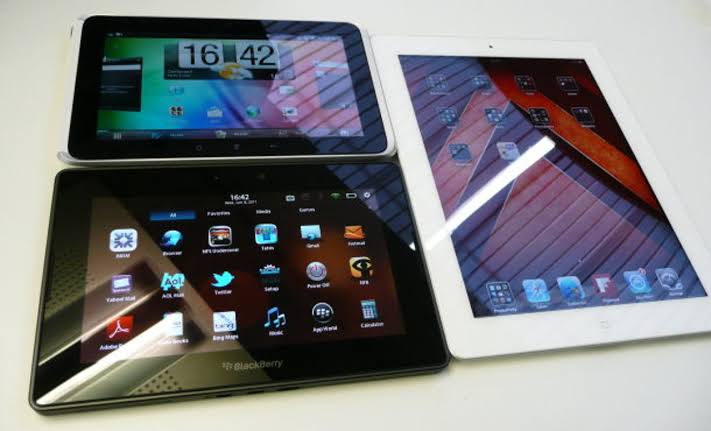Tablets have undergone remarkable evolution since their inception. Transforming from basic slates into powerful mini-computers. Evolution has revolutionized personal computing and mobile technology. Driven by advancements in hardware software and user expectations, shaping how we consume content work and interact with technology on the go.
Early Days: The Birth of Tablets
The concept of tablet computer dates back to early 20th century. It was envisioned by pioneers like Alan Kay and depicted in science fiction works. However it wasn't until the 2000s that tablets started to emerge as viable consumer products. Early models such as Microsoft's Tablet PC and Palm Pilot introduced concept of touch-based interface and handwriting recognition. These devices, although innovative were bulky and lacked processing power. The ecosystem wasn't developed enough to appeal to mainstream consumers.
The Revolutionary iPad: Pioneering the Modern Tablet Era
In 2010, Apple revolutionized the tablet market with introduction of the iPad. It combined a sleek design and intuitive touch interface. The robust app ecosystem redefined what a tablet could be. It popularized concept of multi-touch gestures. Users could swipe pinch and tap their way through applications and content effortlessly. The iPad's success spurred competitors to enter market. This led to a wave of Android tablets from manufacturers like Samsung, Google and Amazon.
Advancements in Hardware and Design
Over the years, tablets have seen significant advancements in hardware and design. Processors have become more powerful, allowing tablets to handle complex tasks such as video editing and gaming. Displays have improved in resolution and color accuracy, offering crisp visuals for multimedia consumption and productivity. Battery life has extended, enabling users to work and play for extended periods without needing to recharge.
Moreover, tablets have become lighter, thinner, and more portable, blurring the lines between tablets and traditional laptops. The introduction of convertible and detachable tablets, such as Microsoft's Surface series and Lenovo's Yoga tablets, further expanded their versatility. These devices can function both as tablets and as full-fledged laptops when paired with detachable keyboards or styluses, catering to users who need productivity on the go.
Software and Ecosystem Development
Software has played a crucial role in the evolution of tablets. Operating systems like iOS and Android have evolved to support tablet-specific features, such as multi-window multitasking, split-screen views, and stylus input. App developers have capitalized on these capabilities, creating a vast array of applications tailored for tablets. From productivity tools like Microsoft Office and Google Workspace to creative apps like Adobe Photoshop and Procreate, tablets have become indispensable tools for professionals and creatives alike.
Furthermore, the integration of cloud computing and synchronization across devices has enhanced the utility of tablets. Users can seamlessly access their documents, photos, and applications across multiple devices, blurring the boundaries between tablets, smartphones, and laptops. This synchronization has made tablets an integral part of the modern digital ecosystem, enabling users to stay productive and connected wherever they go.
Specialized Use Cases and Industries
Tablets have found applications beyond personal use, impacting various industries and sectors. In healthcare, tablets are used for patient records, medical imaging, and telemedicine consultations. In education, tablets have transformed classrooms, providing interactive learning experiences through digital textbooks, educational apps, and multimedia content. In retail and hospitality, tablets serve as point-of-sale systems, inventory management tools, and customer engagement devices.
Moreover, tablets have become essential tools for content consumption and entertainment. Streaming services like Netflix, Hulu, and YouTube offer high-definition video playback on tablets, turning them into portable theaters for watching movies, TV shows, and online videos. E-readers and digital magazines provide a convenient way to read books and periodicals, with adjustable fonts and backlighting for comfortable reading in any environment.
Challenges and Future Trends
Despite their advancements, tablets face challenges in a competitive market dominated by smartphones and laptops. The saturation of the tablet market has led to slower growth and innovation compared to previous years. Moreover, the emergence of large-screen smartphones (phablets) and lightweight laptops has blurred the distinction between device categories, challenging the unique value proposition of tablets.
Looking ahead, future trends in tablet technology include advancements in 5G connectivity, augmented reality (AR), and foldable displays. 5G technology promises faster download speeds and lower latency, enhancing the mobile experience for streaming, gaming, and cloud computing. Augmented reality (AR) applications, such as virtual fitting rooms and interactive educational experiences, could further differentiate tablets from other devices.
Conclusion
The evolution of tablets from basic slates to powerful mini-computers has transformed personal computing and mobile technology. With advancements in hardware, software, and ecosystem development, tablets have become versatile tools for productivity, creativity, and entertainment. Despite facing challenges in a competitive market, tablets continue to innovate and adapt to changing user needs and technological trends. As we look to the future, tablets are poised to remain essential devices, offering users a balance of portability, functionality, and connectivity in an increasingly digital world.
